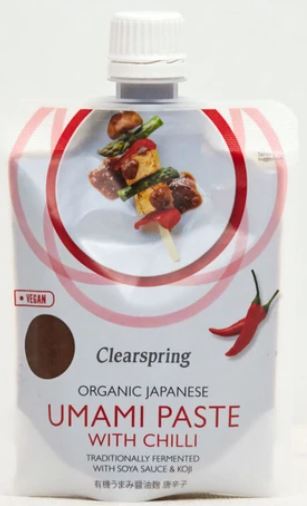Clearpring Umami Paste 150g – Chilli
HK$100
Clearspring’s Organic Japanese Umami Paste with Chilli is a paste which can be added to numerous dishes to enhance their overall Umami flavour. Think of it as a natural flavouring, which will enhance the taste of any dish.
Traditionally made by adding a Koji culture to rice and leaving it to naturally ferment, the Umami is then mixed with soya sauce and chilli to create this incredibly moreish and versatile condiment.
- Fat Free
- Saturated Fat Free
- High in Protein
- Low Sugar
3 in stock
You may also like
HK$55




















Reviews
There are no reviews yet.